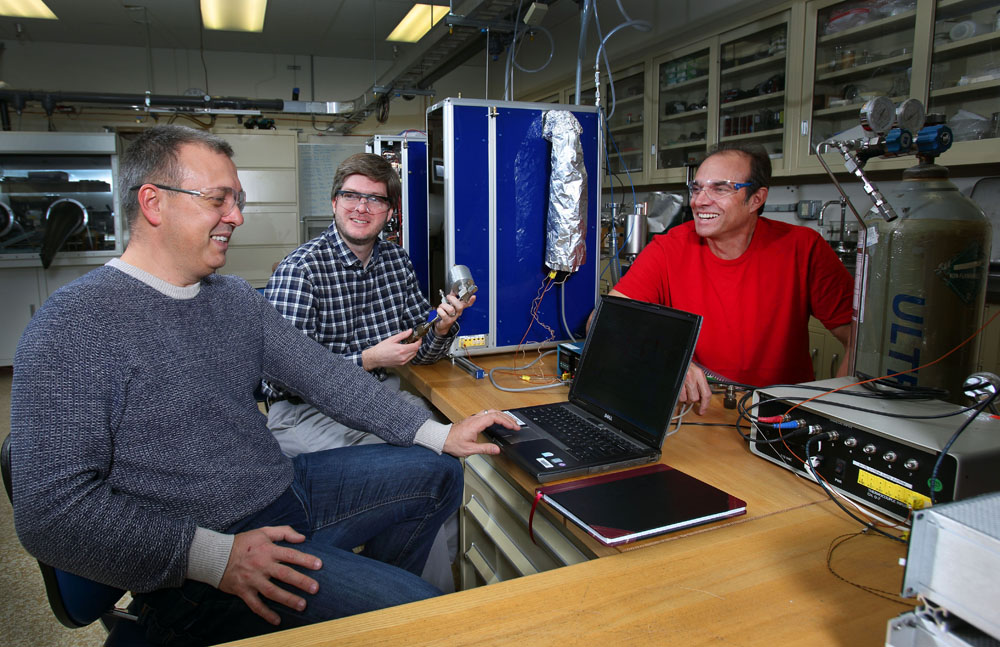Alumnus Makes Strides in Enabling Hydrogen Storage

A Department of Energy Computational Science Graduate Fellowship (DOE CSGF) alumnus is lead author of a paper describing a promising development in hydrogen-storage materials. Such materials are needed to enable clean, hydrogen-powered electric vehicles.
Brandon Wood, a computational materials scientist in the Quantum Simulations Group at Lawrence Livermore National Laboratory, collaborated with experimental researchers at Sandia National Laboratories, Mahidol University in Thailand and the National Institute of Standards and Technology. The research combines theoretical modeling and experiments to probe the properties of complex metal hydrides, a promising class of hydrogen storage materials, a Livermore release says.
The metal hydrides usually are slow to absorb and release hydrogen, limiting their use. Nanoconfinement, in which the metal is infiltrated with a matrix of other material such as carbon, can help accelerate the process by shortening hydrogen diffusion paths or changing the material’s thermodynamic stability. The new research shows that the presence of internal “nano-interfaces” within nanoconfined hydrides can alter which phases appear when the material is cycled.
The paper, which appears on the cover of the Feb. 23 issue of the journal Advanced Materials Interfaces, examines the high-capacity lithium nitride (Li3N) hydrogen storage system under nanoconfinement. The researchers showed that the presence of nano-interfaces fundamentally changed hydrogen uptake and release pathways, leading to dramatically faster performance and reversibility.
“The key is to get rid of the undesirable intermediate phases, which slow down the material's performance as they are formed or consumed. If you can do that, then the storage capacity kinetics dramatically improve and the thermodynamic requirements to achieve full recharge become far more reasonable,” Wood says in the release. “In this material, the nano-interfaces do just that, as long as the nanoconfined particles are small enough. It's really a new paradigm for hydrogen storage, since it means that the reactions can be changed by engineering internal microstructures.”
Wood and his Livermore colleagues used a thermodynamic modeling method that goes beyond conventional descriptions to consider contributions from evolving solid-phase boundaries as the material is hydrogenated and dehydrogenated. They showed that accounting for these contributions eliminates undesirable intermediate phases in nanoconfined lithium nitride. Spectroscopic analysis confirmed the simulation’s findings.
Wood, a DOE CSGF recipient from 2003-2007, directs theory activities across multiple national laboratories for HyMARC, DOE’s Hydrogen Storage Materials – Advanced Research Consortium. The project is designed to conquer obstacles blocking the advancement of solid-state hydrogen storage materials.
Image caption: Sandia National Laboratories chemist Vitalie Stavila, left, with Lawrence Livermore National Laboratory computational scientist Brandon Wood, center, and Sandia chemist Lennie Klebanoff. Credit: Dino Vournas, LLNL.


